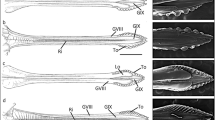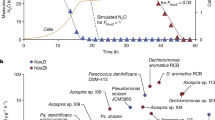Abstract
A METHOD involving the technique of mist-propagation which has led to the successful rooting of leafy clonal cuttings of the Para rubber tree,Hevea brasiliensis, has been reported earlier1,2. A routine application of ‘Fermate’ dust (ferric dimethyldithiocarbamate, kindly supplied by Messrs. E. I. Dupont de Nemours and Co., Inc.) to the base of the cuttings was mentioned in these publications and elsewhere by Levandowsky3 also working with Hevea cuttings.
This is a preview of subscription content, access via your institution
Access options
Subscribe to this journal
Receive 51 print issues and online access
$199.00 per year
only $3.90 per issue
Buy this article
- Purchase on Springer Link
- Instant access to full article PDF
Prices may be subject to local taxes which are calculated during checkout
Similar content being viewed by others
References
Tinley, G. H., and Garner, R. J., Nature, 186, 407 (1960).
Tinley, G. H., Proc. Nat. Rubb. Res. Conf., Kuala Lumpur (1960).
Levandowsky, D. W., Trop. Agric., 36, 247 (1959).
Ng, E. K., and Carr, D. J., Physiol. Plant., 12, 275 (1959).
Van der Kerk, G. J. M., van Raalte, M. H., Kaars Sijpesteijn, A., and van der Veen, R., Nature, 176, 308 (1955).
Author information
Authors and Affiliations
Rights and permissions
About this article
Cite this article
TINLEY, G. Effect of Ferric Dimethyldithiocarbamate on the Rooting of Cuttings of Hevea brasiliensis. Nature 191, 1217–1218 (1961). https://doi.org/10.1038/1911217a0
Issue Date:
DOI: https://doi.org/10.1038/1911217a0
Comments
By submitting a comment you agree to abide by our Terms and Community Guidelines. If you find something abusive or that does not comply with our terms or guidelines please flag it as inappropriate.



